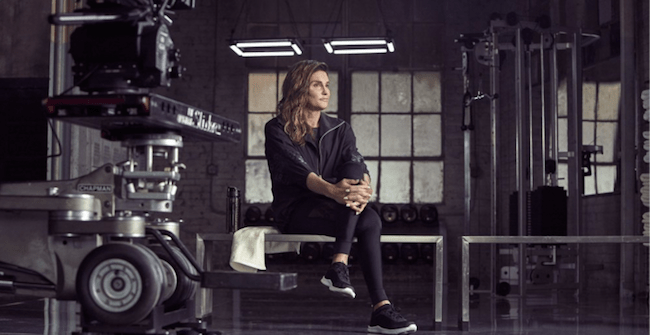Marking another exciting leap for trans visibility in 2016, H&M has announced the trailblazing Caitlyn Jenner as the new face of its H&M Sport line. “So proud to be part of their inspiring #HMSport campaign,” Jenner announced on Twitter last night. This new sportswear partnership is particularly exciting considering Caitlyn’s history as a gold Olympic medal-winning decathlete. Whether the brand intended it or not, it goes some way towards recognizing that gender identity is complex and nuanced. It isn’t just about “before” and “after” a coming out, and it’s certainly not about “before” and “after” any medical or cosmetic procedure. There could hardly be a better complement for Jenner’s MAC campaign.
Nor is this the first time H&M has been awarded a diversity medal in recent weeks. The brand’s fall/winter 16 show at Paris Fashion Week also received an overwhelmingly positive response from the industry. In a city where model diversity is progressing at a glacial pace if even at all, the brand’s casting seemed to be a clear step in the right direction. H&M didn’t just include an entire spectrum of skin colors but women of different sizes and ages. Hari Nef and Andreja Pejic joined a parade that included Jourdan Dunn, Amber Valetta, Ashley Graham, and even the legendary Pat Cleveland, who killed it in a silk head scarf and camel coat. “H&M Won the Casting Diversity Game,” reported Fashionista. Vogue declared that they had “nailed” it.
The applause surrounding Jenner’s campaign and the Paris Fashion Week runway are only the latest bouts of good PR for the once-maligned fast fashion brand. Outside of the diversity milestones, the “Conscious” collection fronted by Olivia Wilde last year earned the brand praise for making an effort to produce sustainable clothing, and the annual H&M Sustainability Reports document in great detail the procedures being implemented in stores and supply chains to minimize environmental damage. Then there’s the Balmain collaboration (and the others before it) that gave the brand yet more edge over its high street counterparts. However H&M is still a fast fashion company manufacturing over 600 million garments per year. This, by its very nature, is unsustainable for both the environment and for the anonymous overseas workers that produce these garments. So what are we ignoring when we turn a company with an ethically complex history into a poster child for diversity? Do the feel-good headlines mask the realities of fast fashion business models? Certainly the latter is far less exciting to talk about.
H&M’s annual sustainability reports show that the brand is clearly making an effort. But surface-level claims about the increased use of sustainable fabrics hide the dangerous reality of the brand’s business model. In 2015, following the devastating Rana Plaza complex collapse in Bangladesh, H&M became the first brand to sign a binding commitment to create a Bangladeshi garment industry “in which no worker needs to fear fires, building collapses, or other accidents that could be prevented with reasonable health and safety measures.” But a Worker Rights Consortium report released by the Clean Clothes Campaign just five months ago revealed that H&M had not honored its commitment. The report showed that all the brand’s factories failed to meet mandated timeframes for repairs and that the majority of all renovations had still not been completed, despite lapsed deadlines, at the time of its publishing. “In the face of worldwide revulsion over the Rana Plaza catastrophe and other garment factory disasters, H&M, the largest producer of garments in Bangladesh, promised to address hazardous conditions in its contract factories there,” said Scott Nova of the Worker Rights. “It is now clear that H&M has broken this promise.” The majority of factories didn’t even have working fire exits.
It’s not like the brand isn’t trying to clean up its act as well as its image. Last September H&M announced the expansion of a program to boost pay for Asian factory workers. The program would boost workers’ salaries, provide some discretionary income, and allow representation through trade unions. Fast-forward to a few months and things aren’t looking so rosy. According to a report by Labor Behind the Label last month — just a few days before Paris Fashion Week — H&M workers in Asia are living in “abject poverty.” Clearly announcements don’t always result in action.
All this shouldn’t detract from the achievements of the empowering women dominating H&M runways and ad campaigns. It’s critical that all women see themselves reflected by an industry that’s historically exclusive. But should we allow these most recent achievements to ignore the struggles of other marginalized communities? It’s definitely something worth keeping in mind as Fashion Revolution Day rolls around next month.
Credits
Text Hannah Ongley
Image via Twitter
